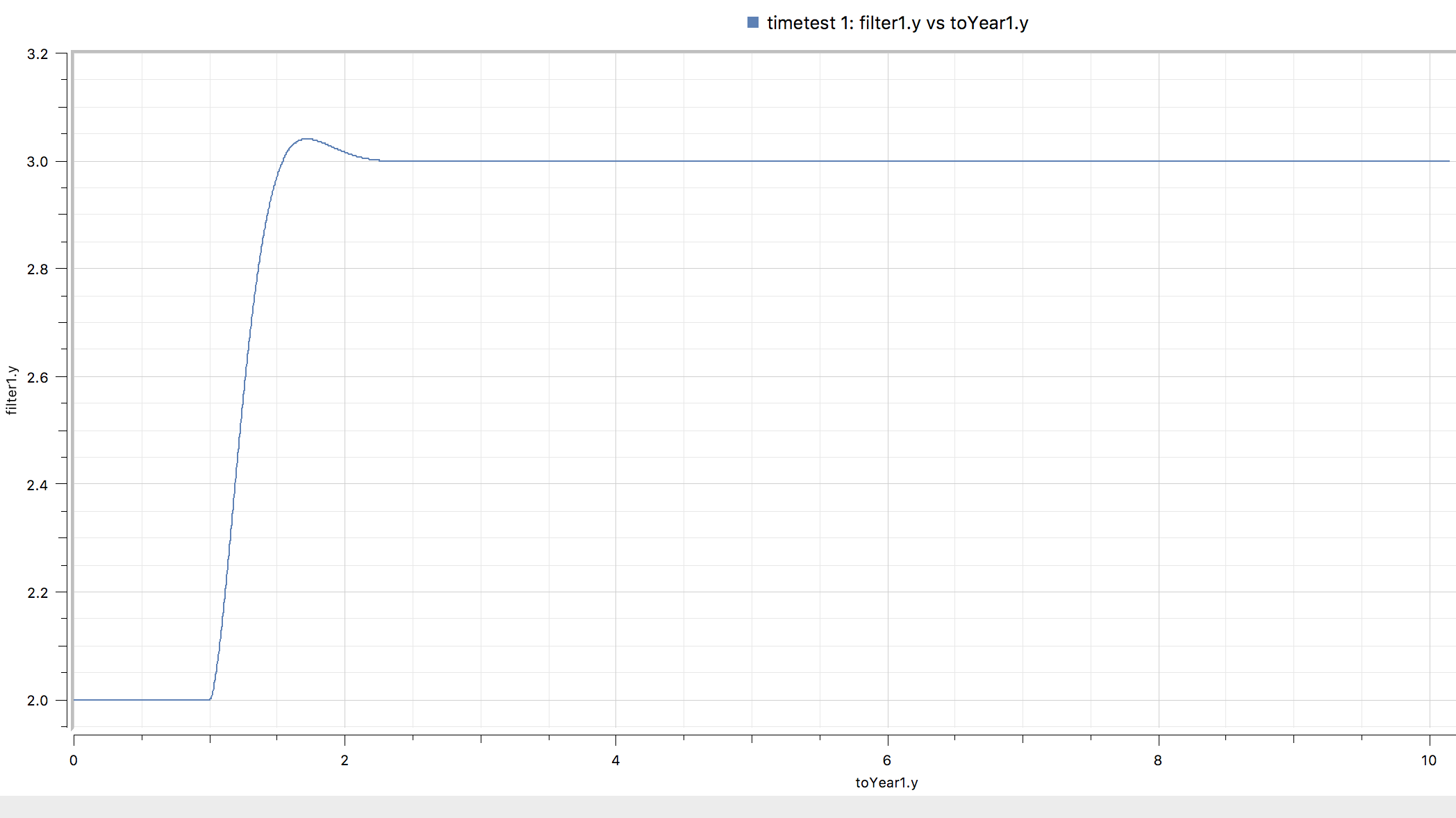Guido,
While all the units of time are done in seconds internally, you can work around this in SystemModeler.
In this model I have a filter that has a one year time constant (talk about moving slowly!). I want to plot it in years, not seconds:

Note that the step starts after one year (which I entered in days in the dialog (display units) but it shows up as seconds on the built-in block. I made my own seconds to year converter block:
model ToYear
extends Modelica.Blocks.Interfaces.SISO;
equation
y = u / (3600 * 24 * 365);
annotation(Diagram(coordinateSystem(extent = {{-150, -90}, {150, 90}}, preserveAspectRatio = true, initialScale = 0.1, grid = {5, 5}), graphics = {Text(visible = true, origin = {-135.776, 24.908}, extent = {{-30.776, -3.301}, {30.776, 3.301}}, textString = "Seconds"), Text(visible = true, origin = {118.717, 25}, extent = {{-11.283, -5}, {11.283, 5}}, textString = "Years")}), Icon(coordinateSystem(extent = {{-100, -100}, {100, 100}}, preserveAspectRatio = true, initialScale = 0.1, grid = {10, 10}), graphics = {Rectangle(visible = true, lineColor = {0, 114, 195}, fillColor = {255, 255, 255}, extent = {{-100, -100}, {100, 100}}, radius = 25), Text(visible = true, textColor = {64, 64, 64}, extent = {{-150, 110}, {150, 150}}, textString = "%name"), Text(visible = true, origin = {-147.2, 47.902}, extent = {{-45.346, -12.098}, {45.346, 12.098}}, textString = "Seconds"), Text(visible = true, origin = {140, 45}, extent = {{-33.849, -15}, {33.849, 15}}, textString = "Years")}));
end ToYear;
Now in the Simulation Center do an X-Y plot of toYear1.y vs filter.y
to get

All other units (other than the time base) can be dealt with by using displayunits and doing conversion to your desired unit in Simulation Center. I know you posted about using operator records but I do not see how that will help you in this case (unless I am missing something)
Is this what you were looking for?
Regards,
Neil